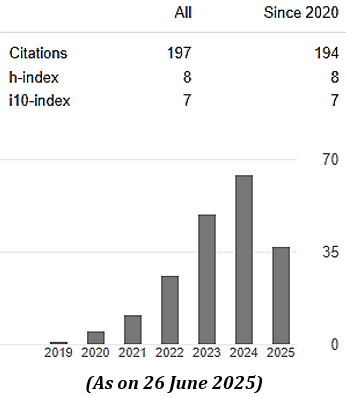COMPARATIVE ANALYSIS OF DIABETIC NEPHROPATHY PATIENTS AMONG DIFFERENT ECONOMIC LEVEL (UPPER, MIDDLE AND LOWER CLASS) BASED ON THEIR SOCIOECONOMIC, NUTRITIONAL AND HEALTH CONDITION IN KHULNA CITY, BANGLADESH
Abstract
The main purpose of the study was to compare the occurrence of diabetic nephropathy disease among the upper,
middle and lower class family at Khulna city in Bangladesh. Data were collected from randomly selected 120
diabetic nephropathy patients in Khulna city through personal interview during August to November, 2014. Mainly
socioeconomic condition, nutritional knowledge, anthropometric and dietary pattern were compared among them.
In Bangladesh, people belonging to these three classes are suffering from this disease but those from upper class are
more affected (near 51.7%). The prevalence of this diseases is higher in male (63%) than female. Amount of drinking
water is restricted (Less than 1 liter per day while a health person can drink 4-5-liter water) for Diabetic nephropathy
patient, in this survey it has been found that about 52.5% patients drink water by following prescription. Hypertension,
constipation and dyspepsia are very common complication associated with diabetic nephropathy and about 73.3%,
55% and 54.2% patients are suffering from hypertension, dyspepsia and constipation respectively. Most of the people
were unconscious about their health and they don’t have enough knowledge about the disease and nutrition. In this
study, it has been shown that 64.2% patients have no previous knowledge about this disease. At the initial stage of the
disease, they could not even realize that they are suffering from this disease. At the severe stage, they understand that
they have this problem. The survey found that 40.0% patients were in stage 5 (kidney failure) of diabetic nephropathy
where 35% and 25% patients are in stage 3 and stage 4 of diabetic nephropathy respectively. Therefore, it can be said
that by growing the awareness among people about the health, disease and nutrition we can reduce the risk of diabetic
nephropathy. Drugs, discipline and dietary guide lines help to control the prevalence of diabetic nephropathy.
Downloads
References
Diabetes Care, 27(1): 579-583.
2. Clinical Practice Guidelines of Diabetic Nephropathy (2004)
Malaysian Society of Nephrology, Ministry of Health, Malaysia, 30-45.
3. Gross J.L., deAzevedo M.M.J., Silveiro M.S.P., Canani M.
L.H.,Caramori M.M.L. and Zelmanovitz M.T., (2005) Diabetic
Nephropathy: Diagnosis, Prevention and Treatment; Diabetes Care,
28(1):176-188.
4. Kerr S.J.,( 2012) Diabetic Nephropathy (Nephropathy, Diabetic;
Diabetic Glomerulosclerosis), NYU Langone Medical Center, 1-4.
5. Khan A.R. (2013), 3.2 million people in Bangladesh suffer from
diabetes; News and views on environment and climate change, energy,
water, public health and agriculture.
6. Otoda T., Kanasaki K. and Koya D. (2014) Low protein diet for
Diabetic Nephropathy; Current Diabetes Reports, 14(9): 523.
7. Rohilla A., Tiwari S. K., Rohilla S. and Kushnoor A., (2011)
Diabetic Nephropathy: Pathogenesis, Prevention and Treatment,
Pelagia Research Library, European Journal of Experimental Biology,
1 (4): 72-80.
8. Vujičić B, Turk T, Crnčević-Orlić Z, Đorđević G and Rački S.,
(2012) Diabetic Nephropathy, INTECH, 4:71-96
MIJST follows the open access policy.

This work is licensed under a Creative Commons Attribution-NonCommercial 4.0 International License. This allows anyone to copy, share, distribute, and modify the work for non-commercial purposes, where the original work and source should be properly credited.















